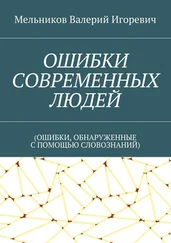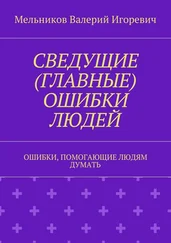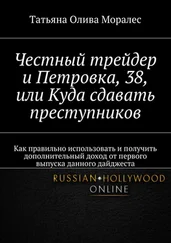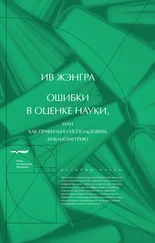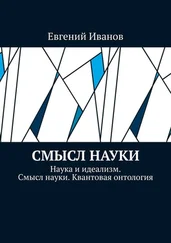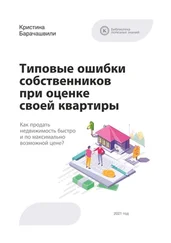Вернуться
133
Pierre Bourdieu, Sur la télévision (Paris: Raisons d’agir, 1996), p. 72.
Вернуться
134
См.: http://theconversation.com/journal-rankings-ditched-the-experts-espond–1598; а также: Jerome K. Vanclay, “An evaluation of the Australian Research Council’s journal ranking,” in Journal of Informetrics , 5, 2011, pp. 265–274.
Вернуться
135
Более подробно о французских дебатах по вопросу рейтингования журналов см.: Anne Saada, “L’évaluation et le classement des revues de sciences humaines par l’Agence de l’évaluation de la recherche et de l’enseignement supérieur (AERES),” in Connexions , 93, 2010, pp. 199–204; David Pontille, Didier Torny, “Rendre publique l’évaluation des SHS: les controverses sur les listes de revues de l’AERES,” in Quaderni , 77 (1), 2012, pp. 11–24.
Вернуться
136
См. анализ валидности различных показателей, используемых для оценки научных исследований, в: Conseil des académies canadiennes [Совет канадских академий] , Éclairer les choix en matière de recherche, op. cit.
Вернуться
137
См.: Emilio López-Cózar, Nicolás Robinson-García, Daniel Torres-Salinas, “Manipulating Google Scholar citations and Google Scholar metrics: simple, easy and tempting,” in arXiv:1212.0638.
Вернуться
138
См.: http://bibliometrie.wordpress.com/2011/05/12/ike-antkare-i-dont-care.
Вернуться
139
См.: James Pringle, “Trends in the use of ISI citation databases for evaluation,” in Learned Publishing , 21, 2008, pp. 85–91.
Вернуться
140
Например, в 2006 году 54 % журналов базы Scopus были также включены в WoS, тогда как 84 % наименований из журнальной базы WOS были также и в Scopus; см.: Ylva Gavel, Lars Iselid, “Web of science and Scopus: a journal title overlap study,” in Online Information Review , 32, 2008, pp. 8–21. Эти цифры могли с тех пор измениться из-за обострившейся конкуренции между этими двумя компаниями.
Вернуться
141
См., например: Anne-Marie Kermarrec, E. Faou, Jean-Pierre Merlet, P. Robert, L. Segoulin, “Que mesurent les indicateurs bibliométriques?” document d’analyse de la commission d’évaluation de l’INRIA, 2007.
Вернуться
142
См.: Éric Archambault, David Campbell, Yves Gingras, Vincent Larivière, “Comparing bibliometric statistics obtained from the Web of science and Scopus,” in Journal of the American Society for Information Science and Technology , 60 (7), 2009, pp. 1320–1326.
Вернуться
143
См., например: Stéphane Mercure, Frédéric Bertrand, Éric Archambault, Yves Gingras, “Impacts socioéconomiques de la recherche financée par le gouvernement du Québec, via les Fonds subventionnaires québécois. Études de cas,” in Rapport présenté au ministère du Développement économique, de l’Innovation et de l’Exportation du Québec, 2007.
Вернуться
144
IREG Ranking Audit Manual , 2011, Bruxelles, IREG; документ доступен по адресу: http://www.iregobservatory.org/pdf/ranking_audith_audit.pdf.
Вернуться
145
Pascal Pansu, Nicole Dubois, Jean-Léon Beauvois, Dis-moi qui te cite, et je te dirai ce que tu vaux. Que mesure vraiment la bibliométrie? (Grenoble: Presses universitaires de Grenoble, 2013), p. 93.
Вернуться
146
См.: Paul Lazarsfeld, “Des concepts aux indices empiriques,” in Raymond Boudon, Paul Lazarsfeld (dir.), Le Vocabulaire des sciences sociales. Concepts et indices (Paris: Mouton, 1971), pp. 27–36.
Вернуться
147
См.: J. R. Cole, S. Cole, Social Stratification in Science, op. cit.
Вернуться
148
По этому вопросу см.: Vincent Larivière, Éric Archambault, Yves Gingras, Étienne Vignola-Gagné, “The place of serials in referencing practices: comparing natural sciences and engineering with social sciences and humanities,” in Journal of the American Society for Information Science and Technology , 57, June 2006, pp. 997–1004; Éric Archambault, Étienne Vignola-Gagné, Grégoire Côté, Vincent Larivière, Yves Gingras, “Benchmarking scientific output in the social sciences and humanities: the limits of existing databases,” in Scientometrics , 68, 2006, pp. 329–342.
Вернуться
149
См.: Jean-Charles Billaut, Denis Bouyssou, Philippe Vincke, “Should you believe in the Shanghai ranking?” in Scientometrics , 84, 2010, pp. 237–263.
Вернуться
150
См.: http://en.wikipedia.org/wiki/Eigenfactor.
Вернуться
151
В этом смысле абсурдно утверждать, что «образование должно всегда ориентироваться на крайне волатильный рынок труда», поскольку образование занимает годы, а это, разумеется, абсолютно несовместимо с «волатильностью» рынка! Отсюда вся важность фундаментального образования, которое преодолевало бы эту «волатильность»… См.: “Les cahiers de la compétitivité. Spécial Enseignement supérieur,” p. II, вставка в Le Monde от 21 мая 2008 г.
Вернуться
152
См. прекрасный образец критики в: Malcolm Gladwell, “The order of things. What college rankings really tell us,” in The New Yorker , 14–21 February, 2011, pp. 68–75. См. более подробно о Шанхайском рейтинге в: Yves Gingras, “Le classement de Shanghai n’est pas scientifique,” in La Recherche , 430, May, 2009, pp. 46–50.
Вернуться
153
Eleanor S. Abaya, “Promotion et notoriété sont devenues une nécessité pour les universités d’aujourd’hui,” Affaires universitaires , 5 août 2008, доступно по адресу: http://www.affairesuniversitaires.ca/promotion-et-notoriete-sont-devenues-une-necessite-pour-les-universites-daujourdhui.aspx.
Вернуться
154
См.: Martin Van Der Werf, “Clemson assails allegations that it manipulates ‘U. S. News’ rankings,” in Chronicle of Higher Education, 4 June, 2009, доступно по адресу: http://chronicle.com/article/Clemson – Assails – Allegations/47295/.
Вернуться
155
The Ottawa Citizen , 23 April 2006. Maclean’s – канадский иллюстрированный журнал, в котором ежегодно публикуются рейтинги канадских университетов.
Вернуться
156
Читать дальше
![Ив Жангра Ошибки в оценке науки, или как правильно использовать библиометрию [калибрятина] обложка книги](/books/390964/iv-zhangra-oshibki-v-ocenke-nauki-ili-kak-pravilno-cover.webp)



